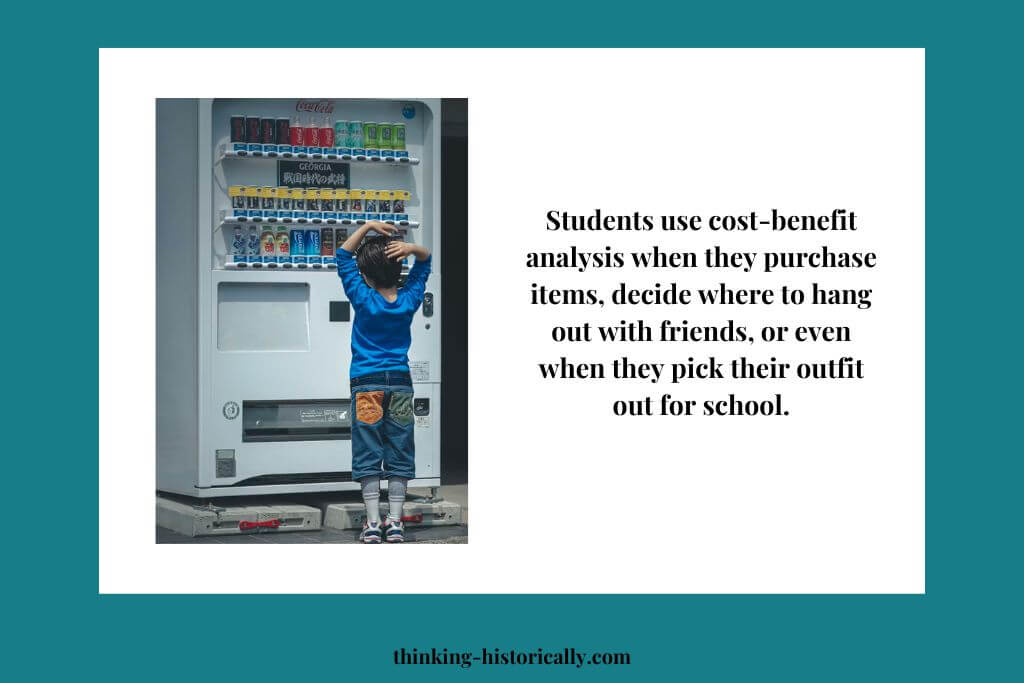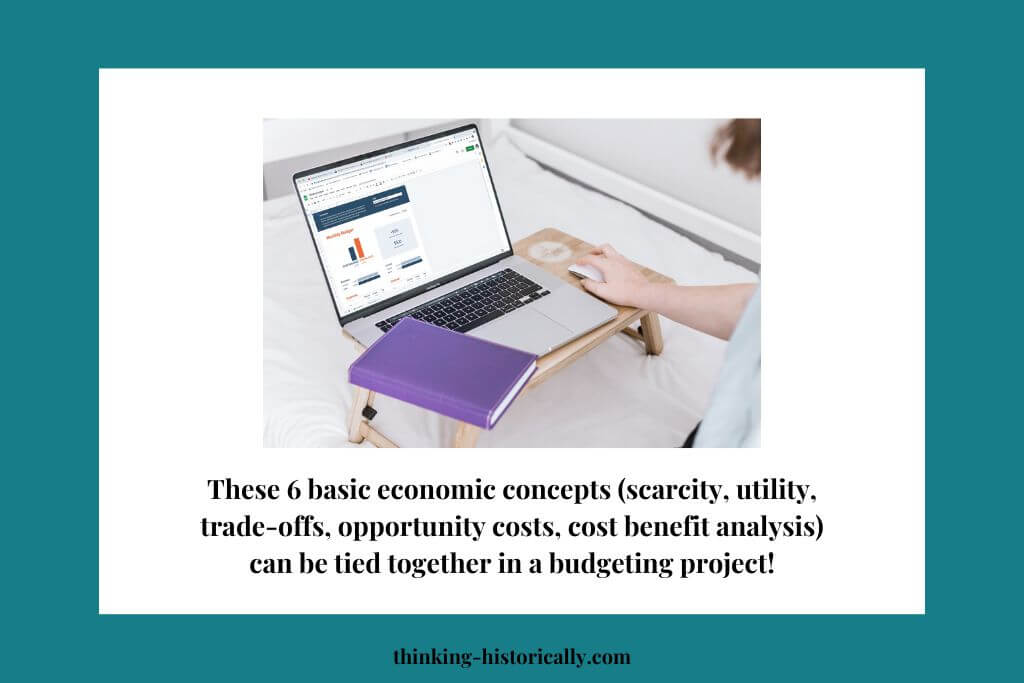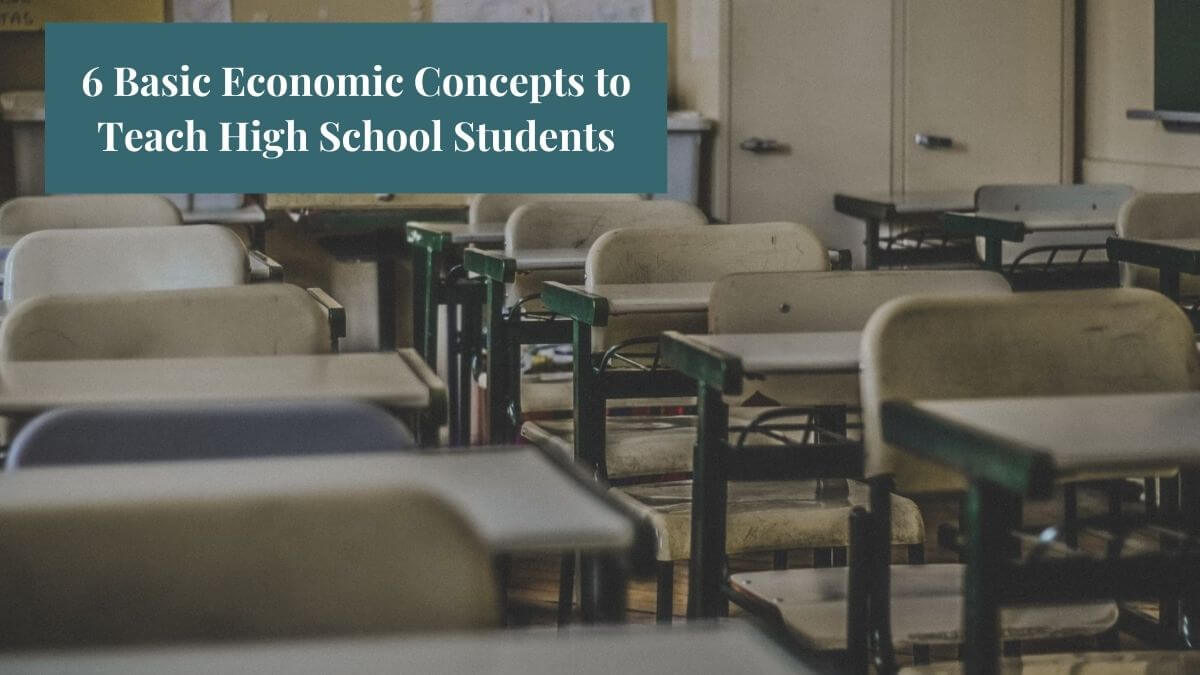If you taught government last semester, chances are you’re teaching economics next semester. You may or may not be new to teaching economics. When I was first hired to be the 12th grade social studies teacher, I was a new teacher. I was excited about teaching government, but economics… not so much. I mean, as a new teacher, I thought, “What is economics?” It is tough trying to learn economic concepts and even tougher trying to scramble to figure out ways to teach it to students.
If you’re in this situation, the good news is that there is a way to make teaching economics exciting for your high school seniors. In this post, I’ll talk about a few basic economics concepts to teach your students. These basic economic concepts are a great way to introduce students to economics.
If you’re interested, you can purchase my Introduction to Basic Economic Concepts Bundle. This bundle includes 7 complete lesson plans and 1 project. Each lesson comes with ready-to-use student handouts.
If you’re not interested, no worries. Keep reading this post to learn about the basic economic concepts to teach your high school seniors.
Basic Economic Concept 1 – Scarcity
A key basic economic concept you should teach your students is scarcity. Scarcity is the idea that resources (time, money, goods, services, etc.) are limited. Since resources are limited or scarce people have to make choices on how or whether or not to use limited resources. After all, economics is all about the choices we make in life.
Scarcity Lifestyle Activity
You can help your students get a better understanding of scarcity by having them complete a lifestyle activity. In the lifestyle activity I created for my students, I gave students a chart with various options for jobs, housing, leisure time, and salary.
Students had to choose between the various options and justify their reasoning for their choices. As students made their choices, students had to reflect upon resources that became “scarce” and explain how scarcity influenced their housing and leisure choices.
Below is an example of job options that I gave my students.

Basic Economic Concept 2 – Utility
The next basic economic concept to teach students is utility. In economics, utility refers to the value or worth of a good or service.
To give students a better understanding of utility, you could give them a couple of utility examples like the ones below:
- I get a flu shot. I don’t like getting shots, but I get a flu show so that I don’t get sick.
- I prefer driving my RAV4 when I go out with my 5 month baby because I feel safer in an SUV.
- I prefer wearing workout shoes over heels to work because they are more comfortable and I’m on my feet all day when I’m at work.
After discussing these utility examples, you can have students answer the following questions:
- What personally gives you utility?
- A student decided to commute to college instead of living in the dorms. What is giving him/her utility?
- A mother shops for organic groceries even though they’re more expensive. What is giving her utility?
- Even though he hates visiting the dentist, John makes an appointment with the dentist. What is giving him utility?
Basic Economic Concepts 3 and 4 – Trade-offs and Opportunity Costs
The next economic concepts go hand-in-hand. These concepts are trade-offs and opportunity costs. In economics, a trade-off is the exchange or sacrifice of one thing to get another. The trade-off is what you didn’t choose. Opportunity cost is the result of choosing one option over another.
These fundamental economic concepts are simple, but students need examples and practice applying them. You can give students the scenarios like the following and ask them to identify the trade-off and the opportunity cost of each scenario:
- Muscle Mike has been going to the gym every day for the past two months. Way to go Muscle Mike! Last Friday was Muscle Mike’s birthday and his friend Party Peter planned a surprise party. Peter tried to convince Muscle Mike to visit him but Muscle Mike went to the gym as usual and went to bed when he got home. What is the trade-off? What is the opportunity cost of Muscle Mike’s choice?
- Gael is a senior in high school. He just turned 18 and wants to drop some classes. He doesn’t think he will graduate on time or go to college anyway. He would rather work more hours at his job to earn some money. What is the trade-off? What is the opportunity cost of Gael’s choice?
Basic Economic Concept 6 – Cost-Benefit Analysis
The next economic concept students should know is cost-benefit analysis. Cost-benefit analysis sounds complicated but it really isn’t! Students actually use cost-benefit analysis a lot throughout the course of their day, they just don’t know it. So what is cost-benefit analysis?
Cost-benefit analysis is a way of comparing the benefits of an action (or decision) to the expected cost. Students use cost-benefit analysis when they purchase items, decide where to hang out with friends, or even when they pick their outfit out for school!

To help students understand cost-benefit analysis ask them them the following question:
- Today is a school night. You are deciding on going to a concert tonight.
- What are the benefits of going to the concert?
- What are the costs of going to a concert tonight?
- Should you go to the concert?
If you’re interested in a complete cost-benefit analysis lesson, check out my A Cost-Benefit Analysis Lesson for High School Students post.
Tying Basic Economic Concepts Together
These 6 concepts are all related and can be tied together through a budgeting project! In the budgeting project I created, resources like money are scarce and students must make choices about how they will allocate their money.

If you would like to read more about this budgeting project, read my Budgeting Project for High School Students post. You can also purchase my budgeting project.
The 6 basic economic concepts I discussed in this post are a great way to introduce students to the study of economics. If you’re interested in purchasing my Introduction to Basic Economic Concepts Bundle, you can click here.
Happy teaching!


